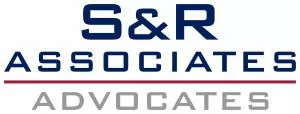The Insolvency and Bankruptcy Code, 2016 ("IBC") sought to usher in a new era in the Indian insolvency regime by introducing a uniform, transparent and predictable insolvency resolution procedure. A key element which differentiates the IBC from previous legislations governing corporate insolvency is the distribution waterfall in the event of liquidation.
The Bankruptcy Law Reforms Committee ("BLRC") in its interim report dated February 10, 2015 ("Interim Report"), stated that the dues payable to the government in circumstances involving insolvency are unlikely to be significant when compared to total government receipts, whereas the impact of non-payment on commercial creditors might hamper their ability to stay afloat.1 Keeping this in mind, the BLRC in its final report dated November 4, 2015 ("Final BLRC Report") recommended classification of the dues owed to the state or the central government at a priority lower than the dues owed to unsecured financial creditors. 2
The preamble to the IBC states as follows:
"An Act to consolidate and amend the laws relating to reorganization and insolvency resolution of corporate persons, partnership firms and individuals in a time bound manner for maximization of value of assets of such persons, to promote entrepreneurship, availability of credit and balance the interests of the stakeholders including alteration in the order of priority of payment of Government dues and to establish an Insolvency and Bankruptcy Board of India, and for matters connected therewith or incidental thereto." (emphasis supplied)
Accordingly, under Section 53 of the IBC, in the event of liquidation, the dues owed to the various stakeholders are paid off in the following order of priority:
- insolvency resolution process costs and the liquidation costs;
- workmen's dues for the period of 24 months preceding the liquidation commencement date and debts owed to a secured creditor in the event such secured creditor has relinquished security;
- wages and any unpaid dues owed to employees other than workmen for the period of 12 months preceding the liquidation commencement date;
- financial debts owed to unsecured creditors;
- any amount due to the central government and the state government and debts owed to a secured creditor for any amount unpaid following the enforcement of security interest;
- any remaining debts and dues;
- preference shareholders; and
- equity shareholders or partners.
Based on the above, government debts (paragraph e) and operational debts (paragraph f) are accorded a lower priority than dues owed to unsecured financial creditors.
Pushback from Operational Creditors and Government Authorities
The above distribution waterfall has been resisted by operational creditors and government authorities. In Swiss Ribbons Private Limited v. Union of India3("Swiss Ribbons"), the Supreme Court of India ("Supreme Court") upheld the constitutional validity of the IBC. The court held that the differential treatment of financial and operational creditors does not violate Article 14 of the Constitution of India due to the existence of an intelligible differentia in the separate classification of creditors.
Unfortunately, this judgment has not prevented further challenges. There has recently been a rising trend of courts and tribunals seeking to deviate from the distribution waterfall under the IBC. This puts the hard-fought gains achieved so far through a path-breaking legislation at risk.
In this note, we discuss three examples:
A. Classification of the Tax Authority as a Secured Creditor
In September 2022, in State Tax Officer v. Rainbow Papers Limited4 ("Rainbow Papers"), the Supreme Court held that as Section 48 of Gujarat Value Added Tax Act, 2003 creates a first charge on the property of a dealer to the extent of any statutory dues under such legislation, the state tax authority has a security interest against the corporate debtor to the extent of such dues thereby making it a secured creditor.
This has marked a significant departure from both legislation and precedent.
In PR Commissioner of Income Tax v. Monnet Ispat and Energy Limited5, the Supreme Court has earlier held that income tax dues cannot take precedence over dues that are owed to secured creditors. The court further stated that "the common law doctrine of priority of crown debts would not extend to providing preference to crown debts over secured private debts." In Sundaresh Bhatt v. Central Board of Indirect Taxes and Customs6, the Supreme Court has held that creation of a charge in favor of the customs authorities under the Customs Act, 1962 would not elevate their position under Section 53 of the IBC. Similarly, in Jalgaon Janta Sahakari v. Joint Commissioner of Sales7, the Bombay High Court observed that simply including the word 'first charge' in a statute does not create priority under recovery proceedings.
It is noteworthy that pursuant to Section 3(30) read with Section 3(33) of the IBC, a security interest may be created by a 'transaction' which secures payment or performance of an obligation. A 'transaction' is defined under the IBC as including an agreement or arrangement in writing for the transfer of assets, or funds, goods or services, from or to the corporate debtor.
It is evident that a 'transaction' and a 'security interest' created by such 'transaction' cannot exist without the consent of the corporate debtor. In the absence of a 'transaction', there can be no 'security interest' as defined under the IBC. Therefore, while the tax authorities might be akin to secured creditors in a general sense, they cannot be classified as secured creditors under the IBC.
A review petition against Rainbow Papers is currently pending before the Supreme Court.
B. Special Position of the Department of Telecommunications
The question regarding transfer of the spectrum assets licensed to Aircel Limited came up before the National Company Law Appellate Tribunal (the "NCLAT") in Union of India v. Vijaykumar V. Iyer8.
Under the Guidelines for Trading of Access Spectrum by Access Service Providers 2015 ("Spectrum Guidelines"), a license to use a spectrum is allocated to a successful bidder upon payment of license fees and such license is transferable by the bidder.
The NCLAT held in Union of India v. Vijaykumar V. Iyer that the license dues were equivalent to contractual dues in the form of operational debt. The Department of Telecommunications (the "DoT") was therefore classified as an operational creditor under Section 5(20) of the IBC. However, the NCLAT also held that the since the Spectrum Guidelines prohibited any trading in spectrum licenses without payment of past dues, the DoT must be paid all its past dues for the licenses to be transferred under the IBC.
The NCLAT's decision has the effect of providing protection to certain operational creditors in cases where a license to use an asset specifically includes a term that prevents the transfer of the asset unless all outstanding dues are paid to the licensor. This would mean that all unpaid dues would have to be settled before the asset could be transferred, without taking into account the debts of any other operational or financial creditors. Under Section 53, the IBC expressly prioritizes the interests of financial creditors over the interests of operational creditors. However, as a result of the NCLAT's ruling, a distinct class of operational creditors will have priority over financial creditors.
In reaching its conclusion, the NCLAT held that: "The defaulting Licensees/ TelCos cannot be permitted to wriggle out of their liabilities by resorting to triggering of CIRP by seeking initiation of CIRP under Section 10 of I&B Code, not for purposes of resolution but fraudulently and with malicious intent of withholding the huge arrears payable to Government, obtaining moratorium to abort Government's move to suspend, revoke or terminate the Licences and in the event of a Resolution Plan being approved, subjecting the Central Government to be contended with the peanuts offered to it as 'Operational Creditor' within the ambit of distribution mechanism contemplated under Section 53 of I&B Code."
The authors submit that leaving aside the question of the circumstances, if any, in which a deviation from the Section 53 distribution waterfall is permissible, the NCLAT judgement does not disclose any evidence to establish any fraud or malice – an adverse inference appears to have been drawn solely from the fact that it was the corporate debtor which initiated the insolvency resolution process.
In Swiss Ribbons, the Supreme Court held that similarly placed creditors must be treated on an equivalent level. This judgement places the DoT on an unequal footing as compared to other operational creditors.
An appeal against the decision of the NCLAT in Union of India v. Vijaykumar V. Iyer has been filed in the Supreme Court.
C. Dues of Workmen and Employees
In October 2022, in Jet Aircraft Maintenance Engineers Welfare Association v. Ashish Chhawchharia, Resolution professional of Jet Airways (India) Ltd.,9 ("Jet Engineers") the NCLAT held that non-payment of the complete provident fund amount to the workmen and employees and the gratuity payment until the insolvency commencement date amounts to non-compliance with provisions of the IBC. The NCLAT directed the successful resolution applicant to make pending payments of provident fund and gratuity dues owed to the workmen and the employees until the date of commencement of insolvency.
It is important to note that 'workmen's dues' in Section 53(1)(b) of the IBC are limited to dues in respect of a period of 24 months preceding the liquidation commencement date. It is evident that the Section 53 distribution waterfall envisages payment of all workmen's dues (including provident fund and gratuity) only for the period of 24 months preceding the liquidation commencement date. The NCLAT has not provided any clear rationale for why the payment of provident fund and gratuity under limb (b) of Section 53(1) must be for the entire period until the date of commencement of insolvency.
By mandating full payment of workmen's dues, the NCLAT ruling has the effect of creating a special category of creditors which is not provided for under the IBC.
Potential Amendments to the IBC
According to recent reports,10 the government is considering an amendment to the IBC in the 2023 budget session to enable a faster takeover of a distressed entity. The Ministry of Corporate Affairs is also reported to be revaluating the lower priority currently given to government dues in the IBC under the Section 53 waterfall mechanism. It has further been reported that the government will issue a circular to facilitate recovery of tax dues from companies undergoing insolvency that may require new buyers to settle 'agreed tax claims'.11
The Parliament must proceed with caution. The IBC was enacted after the failure of the Sick Industrial Companies (Special Provisions) Act, 1985 which had a lengthy and convoluted insolvency resolution process. The Parliament must focus on amendments that incentivize potential resolution applicants to invest in distressed companies.
In Committee of Creditors of Essar Steel India Limited v. Satish Kumar Gupta,12 it was held that only those claims included in the resolution plan and approved by the national company law tribunal would be entertained and all the other claims would stand extinguished. In doing so, the successful resolution applicant is provided a 'clean slate' in terms of restructuring the corporate debtor. In Ghanashyam Mishra and Sons Private Limited v. Edelweiss Asset Reconstruction Company Limited,13 the Supreme Court held that the intent behind Section 31 of the IBC was to provide a fresh start to a corporate debtor so that it can resume functions and operations afresh. If unsatisfied creditors were allowed to bring up claims already dealt with in the resolution plan in accordance with the IBC, the issues sought to be resolved by Section 31 of the IBC would continue.
A key aspect of incentivizing potential resolution applicants includes upholding the clean slate principle. In Invent Asset Securitisation And Reconstruction Pvt. Ltd. v. Girnar Fibres Ltd,14 the Supreme Court held that the IBC was intended to bring the corporate debtor back to its feet and that the IBC cannot be used as a method for recovery of all dues.
The protection of stakeholders cannot be at the cost of a successful insolvency resolution process. Any judicial or legislative interventions should be mindful of not interfering with a delicate balance sought to be achieved under the IBC after careful deliberation. Piecemeal dilution of the Section 53 distribution waterfall threatens to disturb the foundation of the IBC.
Footnotes
1. Paragraph 2.4B(b), Bankruptcy Law Reforms Committee Interim Report, February 10, 2015.
2. Paragraph 6.5.8, Bankruptcy Law Reforms Committee Report, November 4, 2015.
3. (2019) 4 SCC 17.
4. 2022 SCC OnLine SC 1162.
5. 2018 SCC OnLine SC 3456.
6. 2022 SCC OnLine SC 1101.
7. 2022 SCC OnLine Bom 1767.
8. 2021 SCC OnLine NCLT 303.
9. 2022 SCC OnLine NCLAT 418.
10. Chitravanshi, R. (2022) IBC process: Resolution and distribution of funds may be separated, Business Standard News. Available at: https://www.business-standard.com/article/companies/resolution-and-distribution-of-funds-could-be-separate-processes-in-ibc-122120100966_1.html.
11. Shukla, A. (2022) Circular in works on tax recovery from COS under IBC, The Economic Times. Available at: https://economictimes.indiatimes.com/news/economy/policy/circular-in-works-on-tax-recovery-from-cos-under-ibc/articleshow/96356944.cms.
12. 2019 SCC OnLine SC 1478.
13. (2021) 9 SCC 657.
14. Supreme Court of India, Civil Appeal No. 3033 of 2022.
This insight/article is intended only as a general discussion of issues and is not intended for any solicitation of work. It should not be regarded as legal advice and no legal or business decision should be based on its content.


